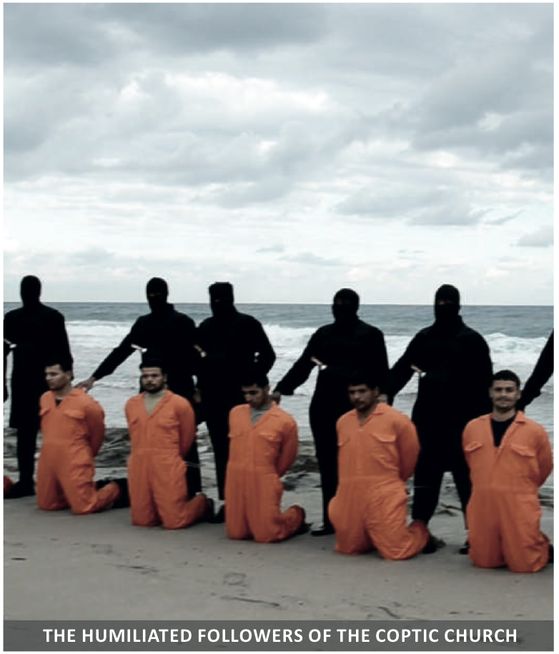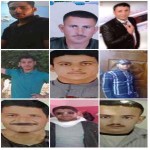Operation Avarice was a difficult military mission to purchase and destroy Iraq’s chemical weapons. Since the beginnings of the take-over of Islamic State in Iraq, infrequent stories have been published about the chemical weapons but nonetheless the truth is bubbling to the surface. Through a FOIA request, some documents have been declassified and turned over for Operation Avarice. Now comes the New York Times with additional revealing truths.
The Central Intelligence Agency, working with American troops during the occupation of Iraq, repeatedly purchased nerve-agent rockets from a secretive Iraqi seller, part of a previously undisclosed effort to ensure that old chemical weapons remaining in Iraq did not fall into the hands of terrorists or militant groups, according to current and former American officials.
The extraordinary arms purchase plan, known as Operation Avarice, began in 2005 and continued into 2006, and the American military deemed it a nonproliferation success. It led to the United States’ acquiring and destroying at least 400 Borak rockets, one of the internationally condemned chemical weapons that Saddam Hussein’s Baathist government manufactured in the 1980s but that were not accounted for by United Nations inspections mandated after the 1991 Persian Gulf war. The effort was run out of the C.I.A. station in Baghdad in collaboration with the Army’s 203rd Military Intelligence Battalion and teams of chemical-defense and explosive ordnance disposal troops, officials and veterans of the units said. Many rockets were in poor condition and some were empty or held a nonlethal liquid, the officials said. But others contained the nerve agent sarin, which analysis showed to be purer than the intelligence community had expected given the age of the stock.
A New York Times investigation published in October found that the military had recovered thousands of old chemical warheads and shells in Iraq and that Americans and Iraqis had been wounded by them, but the government kept much of this information secret, from the public and troops alike.
These munitions were remnants of an Iraqi special weapons program that was abandoned long before the 2003 invasion, and they turned up sporadically during the American occupation in buried caches, as part of improvised bombs or on black markets.
The potency of sarin samples from the purchases, as well as tightly held assessments about risks the munitions posed, buttresses veterans’ claims that during the war the military did not share important intelligence about battlefield perils with those at risk or maintain an adequate medical system for treating victims of chemical exposure.
The purchases were made from a sole Iraqi source who was eager to sell his stock, officials said. The amount of money that the United States paid for the rockets is not publicly known, and neither are the affiliations of the seller.
Most of the officials and veterans who spoke about the program did so anonymously because, they said, the details remain classified. The C.I.A. declined to comment. The Pentagon, citing continuing secrecy about the effort, did not answer written questions and acknowledged its role only obliquely.
“Without speaking to any specific programs, it is fair to say that together with our coalition partners in Iraq, the U.S. military worked diligently to find and remove weapons that could be used against our troops and the Iraqi people,” Rear Adm. John Kirby, the Pentagon press secretary, said in a written statement.
Retired Army Lt. Gen. Richard P. Zahner, the top American military intelligence officer in Iraq in 2005 and 2006, said he did not know of any other intelligence program as successful in reducing the chemical weapons that remained in Iraq after the American-led invasion.
Through the C.I.A.’s purchases, General Zahner said, hundreds of weapons with potential use for terrorists were quietly taken off the market. “This was a timely and effective initiative by our national intelligence partners that negated the use of these unique munitions,” he said.

Not long after Operation Avarice had secured its 400th rocket, in 2006, American troops were exposed several times to other chemical weapons. Many of these veterans said that they had not been warned by their units about the risks posed by the chemical weapons and that their medical care and follow-up were substandard, in part because military doctors seemed unaware that chemical munitions remained in Iraq.
In some cases, victims of exposure said, officers forbade them to discuss what had occurred. The Pentagon now says hundreds of other veterans reported on health-screening forms that they believed they too had been exposed during the war.
Aaron Stein, an associate fellow at the Royal United Services Institute, said the belated acknowledgment of a chemical-rocket purchases, as well as the potentially worrisome laboratory analysis of the related sarin samples, raised questions about the military’s commitment to the well-being of those it sent to war.
“If we were aware of these compounds, and as it became clear over the course of the war that our troops had been exposed to them, why wasn’t more done to protect the guys on the ground?” he said. “It speaks to the broader failure.”
The first purchase under Operation Avarice, according to veterans and officials familiar with the effort, occurred in early September 2005, when an Iraqi man provided a single Borak. The warhead presented intelligence analysts with fresh insight into a longstanding mystery.
During its war against Iran in the 1980s, Iraq had fielded multiple variants of 122-millimeter rockets designed to disperse nerve agents.
The Borak warheads, which are roughly 40 inches long and attach to a motor compatible with the common Grad multiple rocket launcher system, were domestically produced. But no clear picture ever emerged of how many Iraq manufactured or how many it fired during the Iran-Iraq war.
In confidential declarations in the 1990s to the United Nations, Iraq gave shifting production numbers, up to 18,500. It also claimed to have destroyed its remaining stock before international inspectors arrived after the Persian Gulf war.
Revealing the Pentagon’s Long-Held Secrets
Explore the Times investigation on secret casualties of Iraq’s abandoned chemical weapons, and the Pentagon’s response, including follow-up care for those exposed.
No clear evidence ever surfaced to support Iraq’s claim, which meant that questions about whether Boraks remained were “carried forward as one of the big uncertainties,” said Charles A. Duelfer, a senior United Nations inspector at the time who later led the C.I.A.’s Iraq Survey Group. There was “a big gap in the information,” he said.
The mystery deepened in 2004 and early 2005, when the United States recovered 17 Boraks. The circumstances of those recoveries are not publicly known. Then came Operation Avarice and its promise of a larger haul. It began when the Iraqi seller delivered his first Borak, which the military secretly flew to the United States for examination.
The Iraqi seller would then periodically notify the C.I.A. in Baghdad that he had more for sale, officials said.
The agency worked with the Army intelligence battalion and chemical weapons specialists, who would fly by helicopter to Iraq’s southeast and meet the man for exchanges.
The handoffs varied in size, including one of more than 150 warheads. American ordnance disposal technicians promptly destroyed most of them by detonation, the officials said, but some were taken to Camp Slayer, by Baghdad’s airport, for further testing.
One veteran familiar with the program said warheads were tested by putting them in “an old cast-iron bathtub” and drilling through their metal exteriors to extract the liquid sarin within.
The analysis of sarin samples from 2005 found that the purity level reached 13 percent — higher than expected given the relatively low quality and instability of Iraq’s sarin production in the 1980s, officials said. Samples from Boraks recovered in 2004 had contained concentrations no higher than 4 percent.
The new data became grounds for concern. “Borak rockets will be more hazardous than previously assessed,” one internal report noted. It added a warning: the use of a Borak in an improvised bomb “could effectively disperse the sarin nerve agent.”

An internal record from 2006 referred to “agent purity of up to 25 percent for recovered unitary sarin weapons.”
Cheryl Rofer, a retired chemist for the Los Alamos National Laboratory, said such purity levels were plausible, because Iraq’s sarin batches varied in quality and the contents of warheads may have achieved an equilibrium as the contents degraded.
Military officials said that because the seller was a C.I.A. source they did not know his name or whether he was a smuggler, a former or current Iraqi official, a front for Iraq’s government, or something else. But as he continued to provide rockets, his activities drew more interest.
The Americans believed the weapons came from near Amarah, a city not far from Iran. It was not clear, however, if rockets had been retrieved from a former forward firing point used by Iraq’s military during the Iran-Iraq War, or from one of the ammunition depots around the city.
Neither the C.I.A. nor the soldiers persuaded the man to reveal his source of supply, the officials said. “They were pushing to see where did it originate from, was there a mother lode?” General Zahner said.
Eventually, a veteran familiar with the purchases said, “the guy was getting a little cocky.”
At least once he scammed his handlers, selling rockets filled with something other than sarin.
Then in 2006, the veteran said, the Iraqi drove a truckload of warheads to Baghdad and “called the intel guys to tell them he was going to turn them over to the insurgents unless they picked them up.”
Not long after that, the veteran said, the relationship appeared to dry up, ending purchases that had ensured “a lot of chemical weapons were destroyed.”




